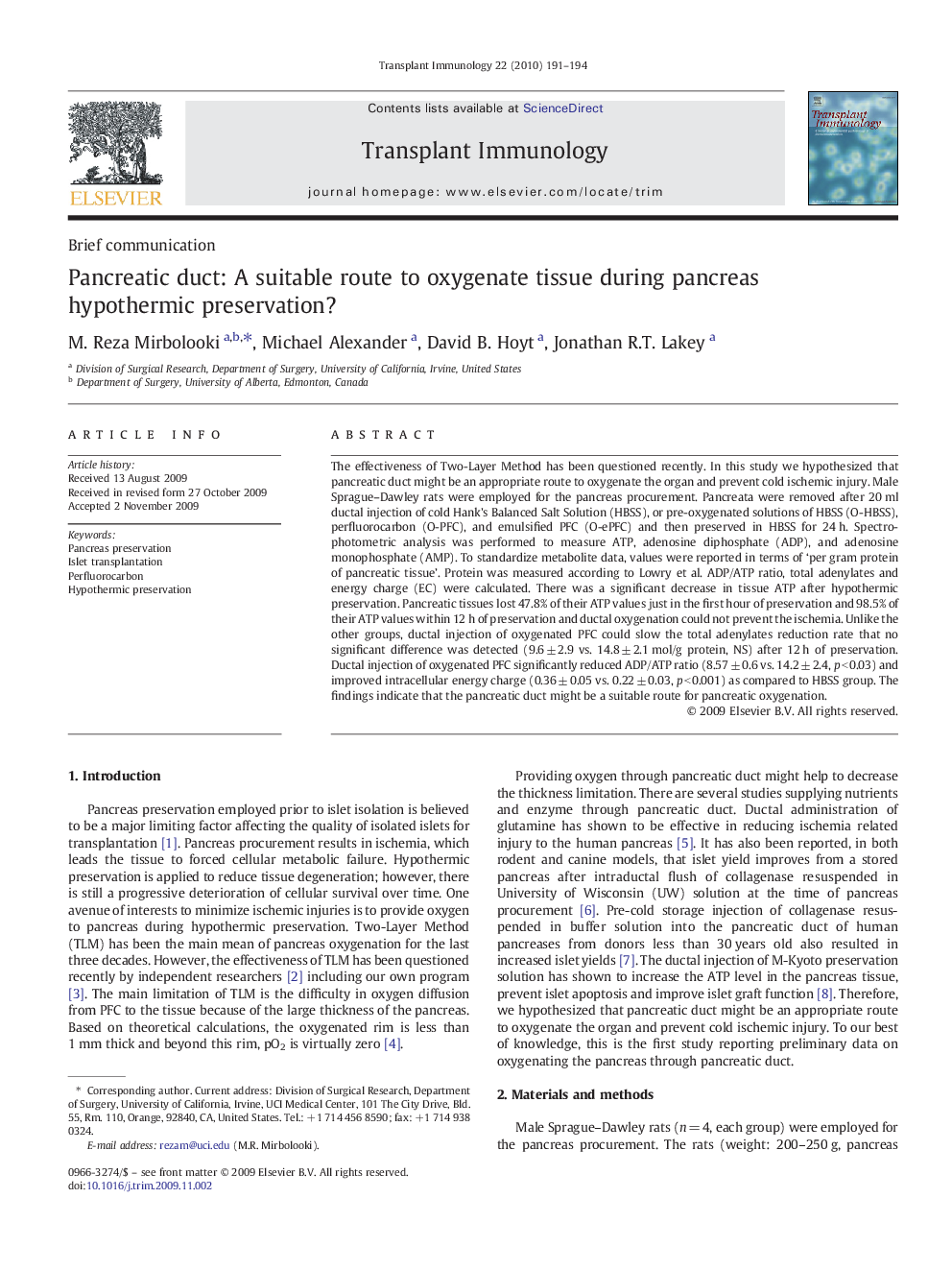| Article ID | Journal | Published Year | Pages | File Type |
|---|---|---|---|---|
| 3392368 | Transplant Immunology | 2010 | 4 Pages |
The effectiveness of Two-Layer Method has been questioned recently. In this study we hypothesized that pancreatic duct might be an appropriate route to oxygenate the organ and prevent cold ischemic injury. Male Sprague–Dawley rats were employed for the pancreas procurement. Pancreata were removed after 20 ml ductal injection of cold Hank's Balanced Salt Solution (HBSS), or pre-oxygenated solutions of HBSS (O-HBSS), perfluorocarbon (O-PFC), and emulsified PFC (O-ePFC) and then preserved in HBSS for 24 h. Spectrophotometric analysis was performed to measure ATP, adenosine diphosphate (ADP), and adenosine monophosphate (AMP). To standardize metabolite data, values were reported in terms of ‘per gram protein of pancreatic tissue’. Protein was measured according to Lowry et al. ADP/ATP ratio, total adenylates and energy charge (EC) were calculated. There was a significant decrease in tissue ATP after hypothermic preservation. Pancreatic tissues lost 47.8% of their ATP values just in the first hour of preservation and 98.5% of their ATP values within 12 h of preservation and ductal oxygenation could not prevent the ischemia. Unlike the other groups, ductal injection of oxygenated PFC could slow the total adenylates reduction rate that no significant difference was detected (9.6 ± 2.9 vs. 14.8 ± 2.1 mol/g protein, NS) after 12 h of preservation. Ductal injection of oxygenated PFC significantly reduced ADP/ATP ratio (8.57 ± 0.6 vs. 14.2 ± 2.4, p < 0.03) and improved intracellular energy charge (0.36 ± 0.05 vs. 0.22 ± 0.03, p < 0.001) as compared to HBSS group. The findings indicate that the pancreatic duct might be a suitable route for pancreatic oxygenation.
